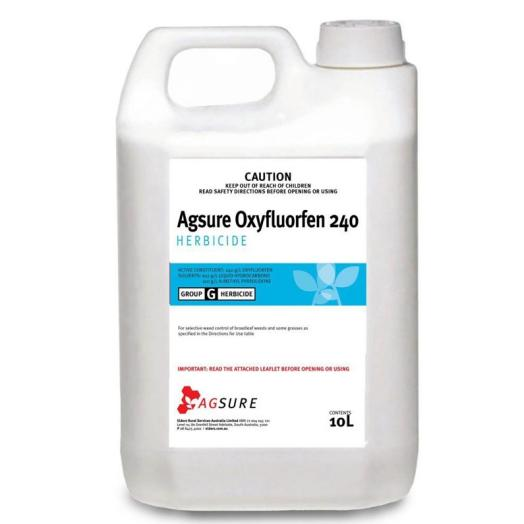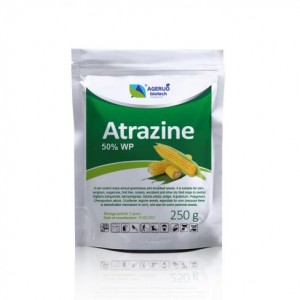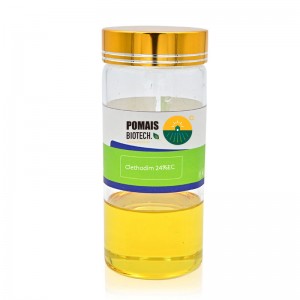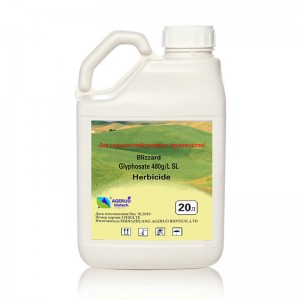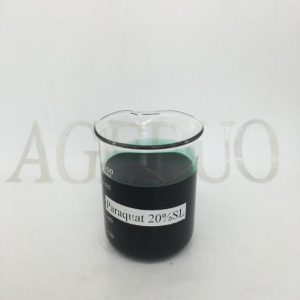Simple description: non-selective herbicides kill all plants, selective herbicides kill only unwanted weeds and do not kill valuable plants (including crops or vegetated landscapes, etc.)
What are Selective Herbicides?
By spraying selective herbicides on your lawn, specific target weeds are harmed by the product while the grass and plants you want are not affected.
Selective herbicides are a great option when you see weeds growing in areas where you want grass and plants, so you don’t have to worry about carefully topdressing and getting chemicals on your grass and damaging them in the process.
Selective herbicides are very easy to use. Simply follow the label instructions and mix your choice of selective herbicide with water in a handheld sprayer. You can then spray it on the target plants you want to get rid of!
Physical Selective Weeding
By separating the herbicide from the rest of the plant or crop, you can target the weed for spraying. One effective way to do this is to spray the chemical after planting the crop and before the weeds grow.
Truly Selective Herbicides
At this point, you can spray the herbicide directly on the crop or field without worrying about harming other plants. True selectivity can be achieved in three different ways:
Physiologically, this means that the way plants take up chemicals, the plants you want to remove take up chemicals much faster than the plants you don’t want.
Morphologically, this refers to the characteristics that a weed may have, such as leaf type, including broadleaf, hairy, etc.
Metabolically, while the plants you want to protect are able to metabolize chemicals without damage, weeds cannot.
With selective herbicides, it’s important to know and read the directions carefully so you don’t damage the plants you want to keep. Keep in mind that the effectiveness of a herbicide depends on when you use it and how much you use.
What are some popular selective herbicides?
1. 2,4-D
Application: Widely used to control broadleaf weeds in lawns, cereal crops, pastures, and non-crop areas.
Timing: Applied post-emergence when weeds are actively growing.
Mode of Action: It mimics plant hormones called auxins, causing uncontrolled growth and eventually the death of the plant.
Type: Selective herbicide, targeting broadleaf weeds.
2. Dicamba
Application: Used to control broadleaf weeds, often in combination with other herbicides in corn and soybean fields.
Timing: Can be applied both pre- and post-emergence.
Mode of Action: Like 2,4-D, Dicamba acts as a synthetic auxin, leading to abnormal growth and death of the weed.
Type: Selective herbicide, primarily targeting broadleaf weeds.
3. MCPA
Application: Commonly used in cereal crops, turf management, and pasture to control broadleaf weeds.
Timing: Applied post-emergence during the active growth of weeds.
Mode of Action: Functions as a synthetic auxin, similar to 2,4-D, disrupting the growth processes in broadleaf weeds.
Type: Selective herbicide for broadleaf weeds.
4. Triclopyr
Application: Effective against woody plants and broadleaf weeds, used in forestry, rights-of-way, and pasture management.
Timing: Applied post-emergence, often used for spot treatments.
Mode of Action: Acts as a synthetic auxin, disrupting cell growth in targeted plants.
Type: Selective herbicide, particularly effective on woody and broadleaf species.
5. Atrazine
Application: Used extensively in corn and sugarcane crops to control broadleaf and grassy weeds.
Timing: Applied pre-emergence or early post-emergence.
Mode of Action: Inhibits photosynthesis in susceptible plant species.
Type: Selective herbicide for broadleaf and some grassy weeds.
6. Clopyralid
Application: Targets certain broadleaf weeds in turfgrass, pastures, and rangelands.
Timing: Applied post-emergence during active growth periods.
Mode of Action: Another synthetic auxin, causing uncontrolled and abnormal growth in targeted broadleaf plants.
Type: Selective herbicide for specific broadleaf weeds.
7. Fluazifop-P-butyl
Application: Used to control grassy weeds in a variety of crops including soybeans, vegetables, and ornamentals.
Timing: Applied post-emergence when grassy weeds are young and actively growing.
Mode of Action: Inhibits lipid synthesis, which is crucial for cell membrane formation in grasses.
Type: Selective herbicide for grassy weeds.
8. Metribuzin
Application: Used in crops like potatoes, tomatoes, and soybeans to control both broadleaf and grassy weeds.
Timing: Can be applied pre-emergence or post-emergence.
Mode of Action: Inhibits photosynthesis by binding to the photosystem II complex in plants.
Type: Selective herbicide for broadleaf and grassy weeds.
9. Pendimethalin
Application: Used as a pre-emergent herbicide to control grassy and certain broadleaf weeds in crops like corn, soybeans, and vegetables.
Timing: Applied pre-emergence to the soil before weed seeds germinate.
Mode of Action: Inhibits cell division and elongation in emerging weed seedlings.
Type: Selective, pre-emergent herbicide.
10. Clethodim
Application: Targets grassy weeds in broadleaf crops such as soybeans, cotton, and sunflowers.
Timing: Applied post-emergence when grassy weeds are actively growing.
Mode of Action: Inhibits the enzyme acetyl-CoA carboxylase, which is vital for fatty acid synthesis in grasses.
Type: Selective herbicide for grassy weeds.
Each of these herbicides is used according to specific guidelines to ensure effective weed control while minimizing damage to desirable plants. Proper timing and application methods are crucial for their success and to prevent resistance development in weed populations.
What are non-selective herbicides?
By spraying non-selective herbicides, you are virtually guaranteed to eliminate any vegetation (whether broadleaf or grass weeds) on the application site with just one spray.
Non-selective herbicides are especially good for getting rid of areas where weeds shouldn’t be growing at all, such as fence edges, sidewalk cracks, and driveways. Because of non-selective herbicides, you can use them in large quantities if you want to get rid of all the weeds in your line of sight, rather than having to be careful with topical treatments.
Non-selective herbicides are very easy to use. Simply follow the label instructions and mix the non-selective herbicide of your choice with water in a handheld sprayer. You can then spray it onto the target plants you want to get rid of, just like that!
Contact
Contact herbicides work the fastest. They usually kill weeds in a few hours, some in as little as half an hour on a sunny day. Contact herbicides are most effective on annual weeds, especially seedlings.
If you want to remove perennials, remember that contact herbicides will only kill the top plants.
Systemic
Another type of non-selective herbicide works in a systemic way. The chemical enters the plant through one part of the plant (usually the roots) and then spreads throughout the plant. This method only works on plants you can see, so it’s not preventative.
You don’t have to worry about the chemicals in systemic herbicides remaining in the soil because they disappear once the plant dies.
What are some popular non-selective herbicides?
1. Glyphosate
Application: Widely used to control a broad range of weeds and grasses in agriculture, horticulture, and residential weed control.
Timing: Applied post-emergence when weeds are actively growing.
Mode of Action: Inhibits the enzyme EPSP synthase, which is necessary for the synthesis of essential amino acids in plants, leading to plant death.
Type: Non-selective herbicide.
2. Diquat
Application: Often used for aquatic weed control and in the preparation of fields before planting. Also used for desiccation of crops before harvest.
Timing: Applied post-emergence; works very quickly.
Mode of Action: Disrupts photosynthesis by producing reactive oxygen species, leading to rapid cell damage and death.
Type: Non-selective herbicide.
3. Glufosinate
Application: Used to control a broad spectrum of weeds in agriculture, especially for crops genetically modified to resist it.
Timing: Applied post-emergence when weeds are actively growing.
Mode of Action: Inhibits the enzyme glutamine synthetase, leading to the accumulation of ammonia in plant tissues and plant death.
Type: Non-selective herbicide.
4. Paraquat
Application: Used to control weeds and grasses in many agricultural and non-agricultural settings. Due to its high toxicity, its use is highly regulated.
Timing: Applied post-emergence; works very quickly.
Mode of Action: Interferes with photosynthesis by producing reactive oxygen species, causing cell damage and rapid plant death.
Type: Non-selective herbicide.
5. Imazapyr
Application: Used against a wide range of annual and perennial weeds, shrubs, and trees. Commonly applied in industrial sites, rights-of-way, and forestry.
Timing: Can be applied both pre- and post-emergence.
Mode of Action: Inhibits the enzyme acetolactate synthase (ALS), which is essential for the synthesis of branched-chain amino acids, leading to plant death.
Type: Non-selective herbicide.
6. Pelargonic Acid
Application: Used for quick burndown of vegetation and is popular in organic farming and gardening as it is derived from plants.
Timing: Applied post-emergence; works quickly.
Mode of Action: Disrupts cell membranes, leading to rapid desiccation of plant tissues.
Type: Non-selective herbicide.
7. Vinegar (Acetic Acid)
Application: Used as a natural, non-selective herbicide for spot treatment of weeds in gardens and lawns.
Timing: Applied post-emergence; higher concentrations (typically 20% or more) are more effective.
Mode of Action: Lowers the pH of the plant, causing cell damage and desiccation.
Type: Non-selective herbicide.
8. Salt (Sodium Chloride)
Application: Often used in combination with vinegar or other natural substances for spot treatment of weeds. Excessive use can lead to soil salinity issues.
Timing: Applied post-emergence.
Mode of Action: Disrupts the osmotic balance in plant cells, causing dehydration and death.
Type: Non-selective herbicide.
Each of these non-selective herbicides has specific applications and usage guidelines to ensure effective weed control while minimizing potential harm to desirable plants and the environment. Proper application techniques and safety precautions are essential when using these products.
How do I use these herbicides?
You want to make sure you know how to apply each option to ensure the best results.
Herbicides are selective to prevent weeds from growing, and you can use them before they emerge. Using herbicides in late winter and early spring can be beneficial.
If you’ve seen signs of weeds, you can use what’s called a post-emergence selective herbicide. The leaves absorb it and the chemicals spread from there. Use this herbicide in the spring, when the plants are young and vulnerable.
With non-selective herbicides, caution is key if there are other plants around that need protection. To clear a field for planting, you can spray herbicides as needed, but use caution for topical treatments around sidewalks.
Remember that herbicides (especially non-selective ones) contain toxins that are harmful to humans and pets. Avoid getting them on your skin and clothing.
Which herbicide should I choose?
Choose a non-selective herbicide if you want a fast-acting herbicide that will help you clean up your field or garden before planting your desired plants. Keep in mind that this is not a long-lasting herbicide, so you will likely need to use it again the following year to get rid of weeds.
Use a selective herbicide if you want to be able to get rid of weeds and other invasive vegetation without damaging your crops or the plants you want to keep.
FAQ
What is a selective herbicide?
A selective herbicide is a type of herbicide that only kills specific weeds without affecting other plants.
What is a non-selective herbicide?
A non-selective herbicide is one that kills all plant species, not just some specific weeds.
What is the difference between selective and non-selective herbicides?
Selective herbicides target only specific types of weeds and do not affect other plants, while non-selective herbicides kill all types of plants.
Do non-selective herbicides kill grass?
Yes, non-selective herbicides will kill all grass.
How do I use selective herbicides?
Selective herbicides should be used according to label directions, in appropriate climatic conditions and when target weeds are actively growing to ensure effectiveness and safety.
When to use selective herbicides?
Selective herbicides are usually applied when the target weed is in the rapid growth phase for best results.
Why do farmers choose to use selective herbicides?
Farmers choose to use selective herbicides in order to effectively control weeds without causing crop damage, thereby improving crop yield and quality.
Is 2,4-D a selective herbicide?
Yes, 2,4-D is a selective herbicide used primarily to control broadleaf weeds.
Is atrazine a selective herbicide?
Yes, atrazine is a selective herbicide typically used to control broadleaf weeds and some grass weeds.
Is glyphosate a selective herbicide?
No. Glyphosate is a non-selective herbicide that will kill all plants.
Is paraquat a selective herbicide?
No. Paraquat is a non-selective herbicide that will kill all plants it comes in contact with.
Is baking soda considered a non-selective herbicide?
No, baking soda is not typically used as a non-selective herbicide.
Do non-selective herbicides kill grass?
Yes, non-selective herbicides will kill grass.
Are non-selective herbicides harmful to box turtles?
Non-selective herbicides can be harmful to box turtles and other wildlife and should be used with caution.
What selective herbicides kill chickweed?
A selective herbicide containing flumetsulfuron or ethoxyfluorfen can be effective in controlling chickweed.
What selective herbicides kill Japanese ghost weed?
A selective herbicide containing flusulfuron is effective in controlling Japanese ghostweed.
Will selective herbicides kill centipedegrass?
Some selective herbicides may kill centipedegrass, but the label needs to be checked to determine applicability.
Will selective herbicides damage fruit on fruit trees?
Most selective herbicides are not harmful to fruit, but they should still be used with caution to avoid direct contact with fruit.
What selective herbicides can be used on creeping periwinkle?
Selective herbicides such as flumetsulfuron can be effective in controlling weeds on small-trailing periwinkle.
Post time: May-31-2024



